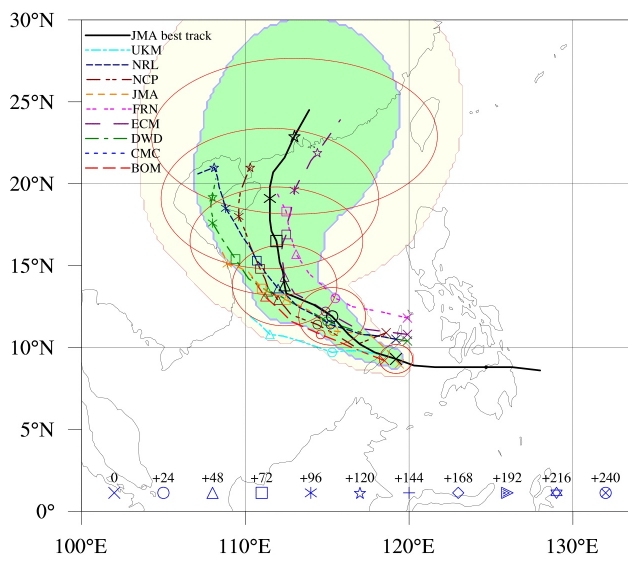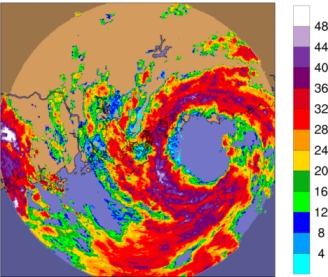Climate and Tropical Cyclone
|
| Large Errors in Tropical Cyclone Track Forecasts: Causes and Possible Reduction | |
|
Tropical cyclones, commonly known as typhoons in Asia, affect many coastal regions in the world. Better forecasting of their movement (track forecast) is therefore crucial in reducing the fatalities and damage to properties when the cyclones make landfall. During the past few decades, improvement of technologies have led to a significant decrease in the track forecast errors. However, there still exist many cases in which the errors are extremely large. Clearly, the number of such large-error cases should be reduced. To investigate the possible reasons for these large-error cases, so as to improve the accuracy of track prediction, therefore forms the main objective of this proposed study. There are at least two types of situations in which large track forecast errors have been found. The project will examine the cases in which the forecast errors are extremely large and identify the possible reasons for such large errors through analyses of the predicted fields and the characteristics of the cyclones. Results of these analyses will provide a basis for hypothesizing the reasons for the forecast failures. These hypotheses will be tested by running sensitivity experiments with a prediction model. |
 |
|
The findings in this study will contribute significantly to prediction model developers who can modify these models to improve the track forecasts. In addition, more optimal observation systems can be proposed through analyzing the deficiency in the initial conditions of these models to produce more accurate track forecasts. From an operational forecasting point of view, forecasters can take advantage of the results of this study to determine the conditions under which they have to be cautious in interpreting the ensemble tracks. |
|
| Tropical Cyclone Size: Climatology, Physics and Prediction | |
|
Tropical cyclones (TCs), generally known as typhoons, affect many parts of Asia every year, causing loss of lives and property. In issuing warnings to the public when a TC is approaching, a weather agency will need to predict not only the strongest winds associated with the TC but also the extent of the damaging winds, such as gale-force winds. However, the predictions of the latter, commonly known as TC size, are currently done empirically because of our limited understanding of the physical processes responsible for causing changes in the size. A recently completed project by the PI, through the support of the RGC, has identified one possible process and generated the climatology of TC size for two ocean basins. However, the results and the conclusions are based on a dataset that has only 11 years of data, although it is already the largest dataset available. To ascertain these results, identify other possible physical processes, establish more robust size climatologies for all ocean basins, search for possible interannual or even interdecadal variations of size, it is necessary to use a dataset that spans a much longer period of time. This proposal is therefore to address these objectives by using such a dataset. The second part of this project is to investigate the possibility of using an operational numerical-weather-prediction model for real-time prediction of TC size, and verify the predictions against this dataset. Such predictions have never been attempted before. Specifically, the project has the following objectives: |
 |
|
1) to validate the use of the new size estimates against existing
observational datasets |
|
| An Observational Study of the Rainfall Distributions Associated with Tropical Cyclone Landfall | |
|
During the period 2008-2013, a total of 47 tropical cyclones (TCs) made landfall in China. Data related to all these TCs have been archived by the Shanghai Typhoon Institute of the China Meteorological Administration. In addition, radar data from two radars and meteorological data of over 10 TCs have also been archived by the Hong Kong Observatory. A combination of all these data represents probably the largest dataset ever assembled for the study of meteorological conditions related to landfalling TCs in Asia. This project is to identify temporal changes in the rainfall distributions associated with TC landfall under different environmental conditions and different TC characteristics of a large number of cases through analyses of observations from a variety of platforms. This observational analyses will provide a basis for future studies of the physical mechanisms responsible for the convection and rainfall distributions associated with TC landfall under various environmental conditions. |
 |


